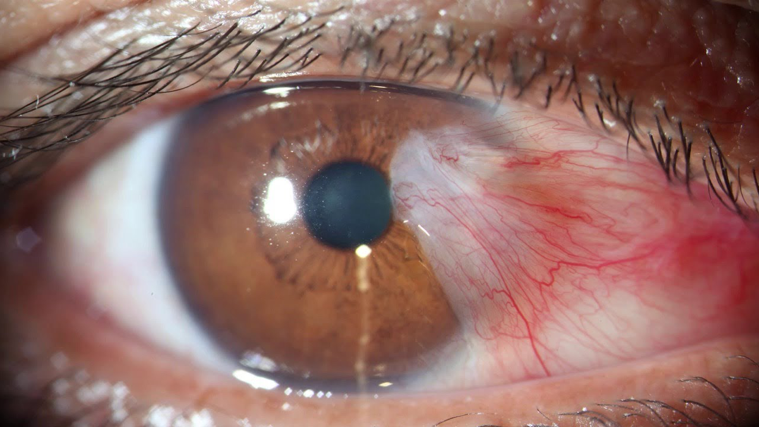Is Having a Pterygium Dangerous?
Study Finds Pterygium may increase risk of Cutaneous Melanomas
A pterygium is a visible growth on the surface of the eye. It typically emerges as a triangular, soft-tissue growth from the corner of the eye, with a pink and fleshy appearance. This growth is the body’s way of trying to protect the eye from intense environments, such as high levels of sunlight, dust, sand or wind.
In general, pterygia (plural) are not dangerous. During the early stages of pterygium development, the main concern is cosmetic – they change the eye’s appearance – but there is no effect on vision. Symptoms in the early stages may include irritation, itching or burning. These can generally be managed with eye drops. Avoid further exposure to sunlight and wind to reduce the stimulus for it to grow larger. A small pterygium that has stopped growing is relatively harmless and may not need any further treatment. However, surgery is an option if you are worried about the cosmetic appearance of your eye and find you feel self-conscious which may affect your overall confidence and social interactions.
In many cases, the pterygium may continue to grow across the eye and either directly block vision or distort the shape of the cornea and cause blurred vision (astigmatism).
Importantly, pterygia are not cancerous – they are benign growths. That means that while they may grow locally (and possibly affect your sight), they won’t spread to other parts of your body. Nevertheless, it’s important that you have an ophthalmologist evaluate any growth on your eye to rule out more serious conditions, such as a conjunctival or iris tumor.
Pterygium – a red flag for cutaneous melanoma, major new study shows
And while pterygia themselves are not cancerous, new findings published by Australian researchers, looked at 23,625 people who underwent treatment for pterygium, found that people who have a pterygium are nearly 25% more likely to develop malignant melanoma – a dangerous form of skin cancer.
The study advised, ‘Eye care providers who see patients with developing pterygia should advise these patients of this increased risk and recommend regular skin surveillance.” Tell your primary care or dermatologist if you have (or have had) a pterygium, make sure that you protect your skin from the sun/UV exposure (i.e. sunscreen, long-sleeved tops, shade) and always have regular skin checks.



